
Kyoto’s Ancient Kamigamo Shrine
Guideto Japan
Travel Culture History- English
- 日本語
- 简体字
- 繁體字
- Français
- Español
- العربية
- Русский
Water’s Purifying Effect
Situated along the upper reaches of the Kamo River in Kyoto, the Kamigamo Shrine and its companion Shimogamo Shrine further downstream are known collectively as Kamosha. The tutelary shrines of the noble Kamo family, they boast an ancient history. Shrine buildings were already standing by the Asuka period (593–710), and after the capital moved to Kyoto in 794, Kamosha was venerated by the emperor and the nobility as the protector of the imperial palace.
The Kamigamo Shrine is associated with Kamo Wakeikazuchi no Ōkami, a deity capable of controlling the natural elements, and has long been believed to afford protection against lightning strikes. The shrine was also a favored place of worship among warriors, who hoped to benefit from the deity’s formidable powers to win in battle. Nowadays, the kami is revered as the god of electricity and the shrine attracts those working in the electrical and IT industries, who come to seek divine favor.
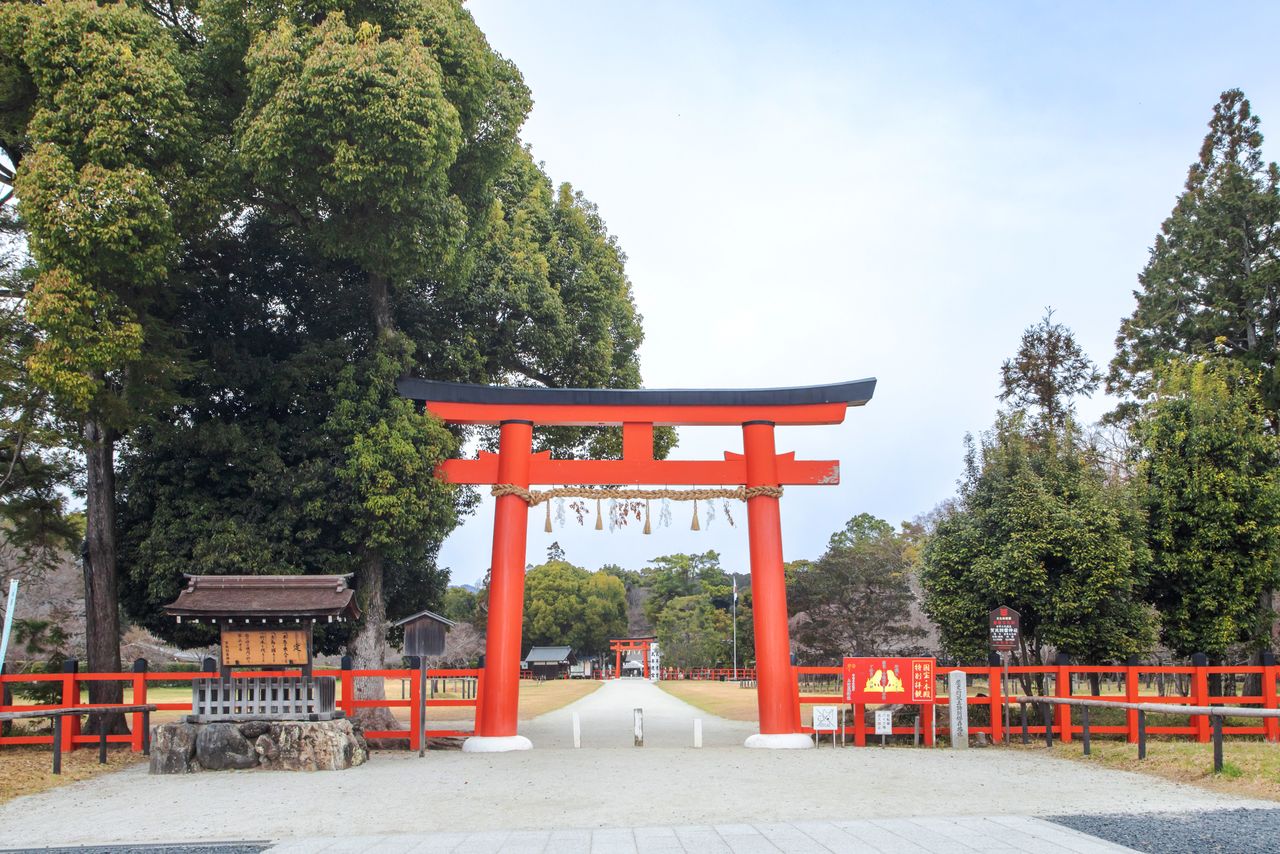
The ichi no torii gate marks the entrance to the shrine. (© Edit Plus)
The shrine sets at the foot of Mount Kōyama, where according to legend Kamo Wakeikazuchi no Ōkami alighted from heaven. The grounds offer a serene atmosphere rich in nature. Among the manty buildings are two structures designated national treasures and 41 others that are important cultural properties. The entire area is included among the Historic Monuments of Ancient Kyoto inscribed as a UNESCO World Heritage Site in 1994.
The inner sanctum contains the honden, the main sanctuary, and the secondary gonden that temporarily houses the shrine kami during the shikinen sengū refurbishment ritual repeated every 21 years. The sloping roofs of the buildings extend lower on the entrance side to form deep eaves in an example of classic Shintō architecture, remaining virtually unchanged since the shikinen sengū was first prescribed over 1,000 years ago.
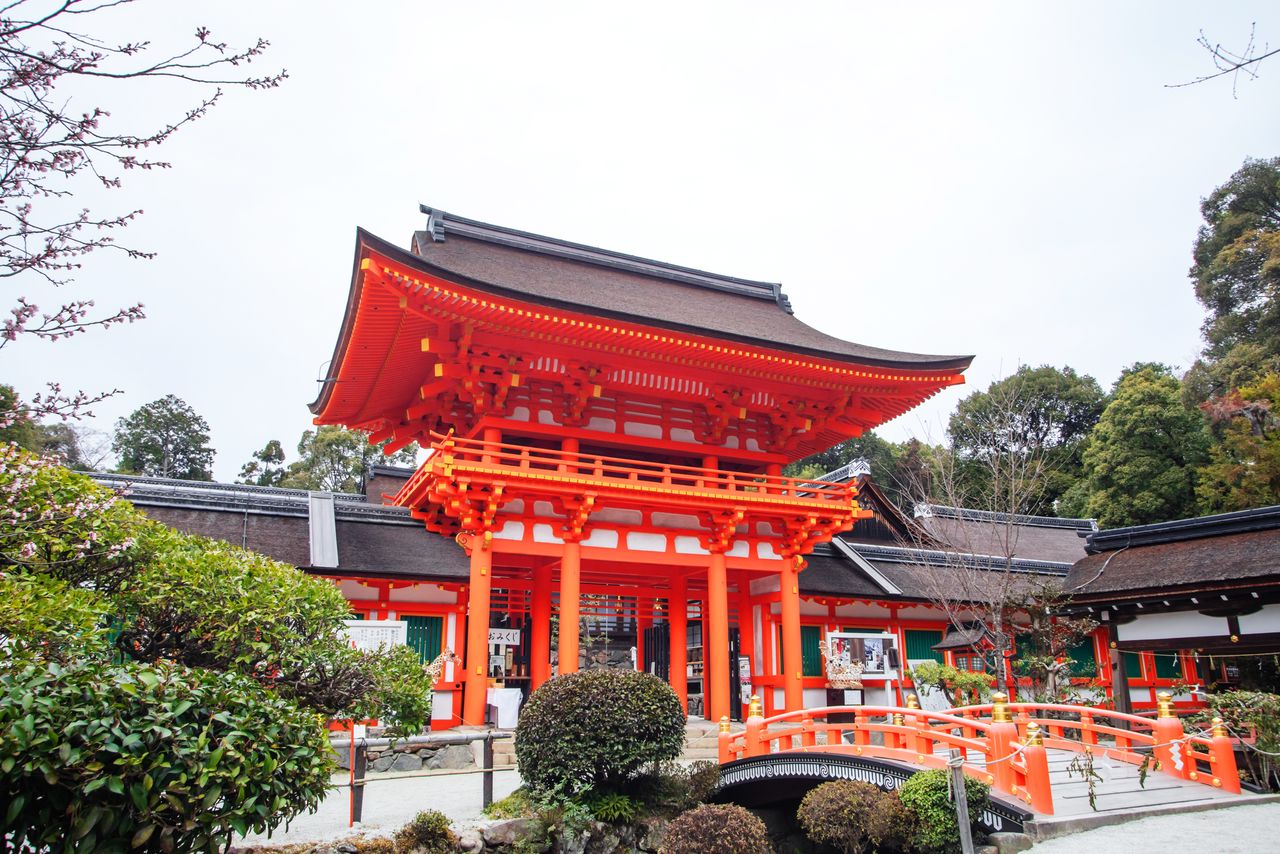
The two-storied Rōmon at the entrance to the main hall was constructed in 1628. The covered galleries to the left and right are important cultural properties. The structure’s bright vermillion color is believed to drive away evil spirits. (© Edit Plus)
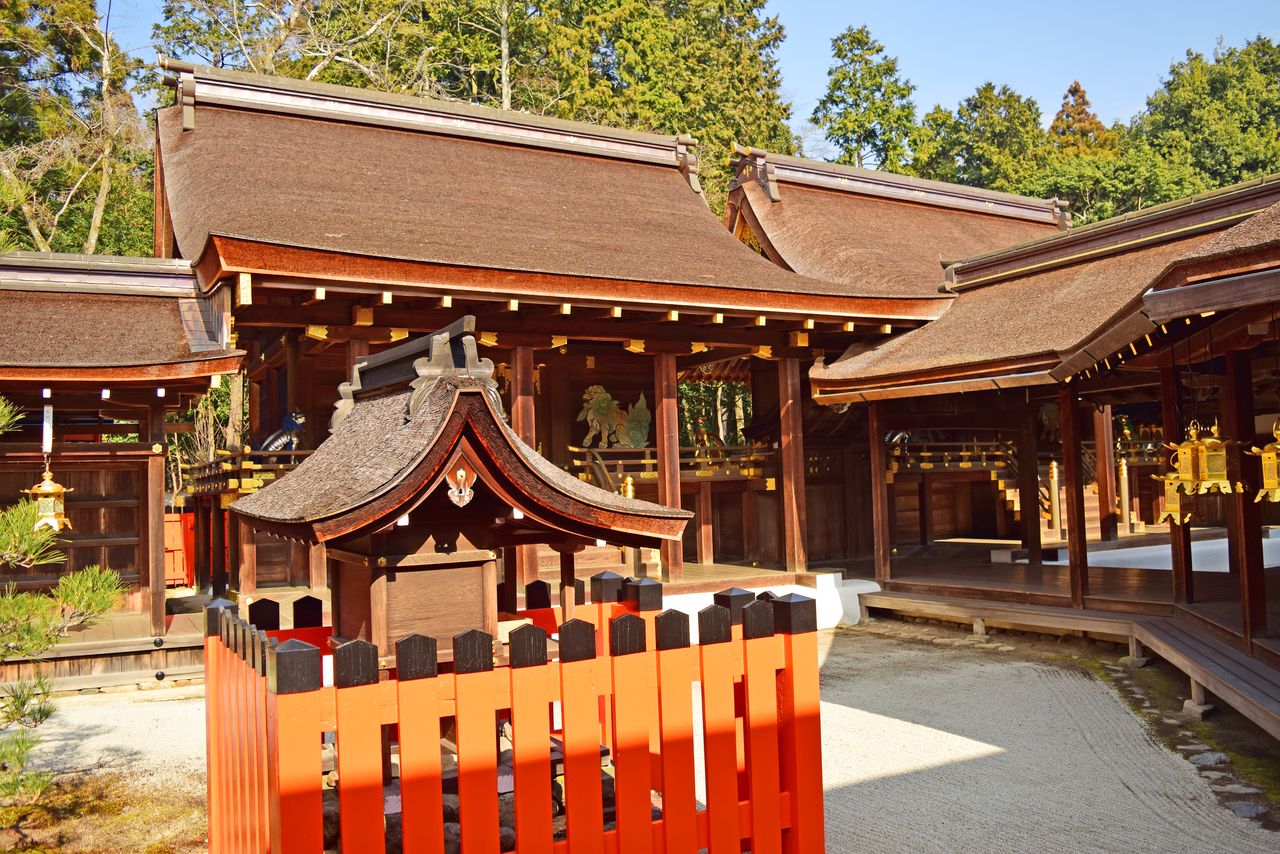
The honden and gonden at the right and left, respectively. Special worship at the honden includes a purification ceremony and a briefing on the shrine by a shrine priest. (Courtesy of Kamigamo Shrine)
Kamigamo Shrine stands at the meeting point of the Omonoi and Mitarashi Rivers, which flow through the shrine precincts. To reach the shrine, visitors cross a bridge spanning one or the other river. According to a shrine priest, the act of crossing the water is a symbolic purification, with the gentle murmur of the rivers offering a kind of mental refreshment.
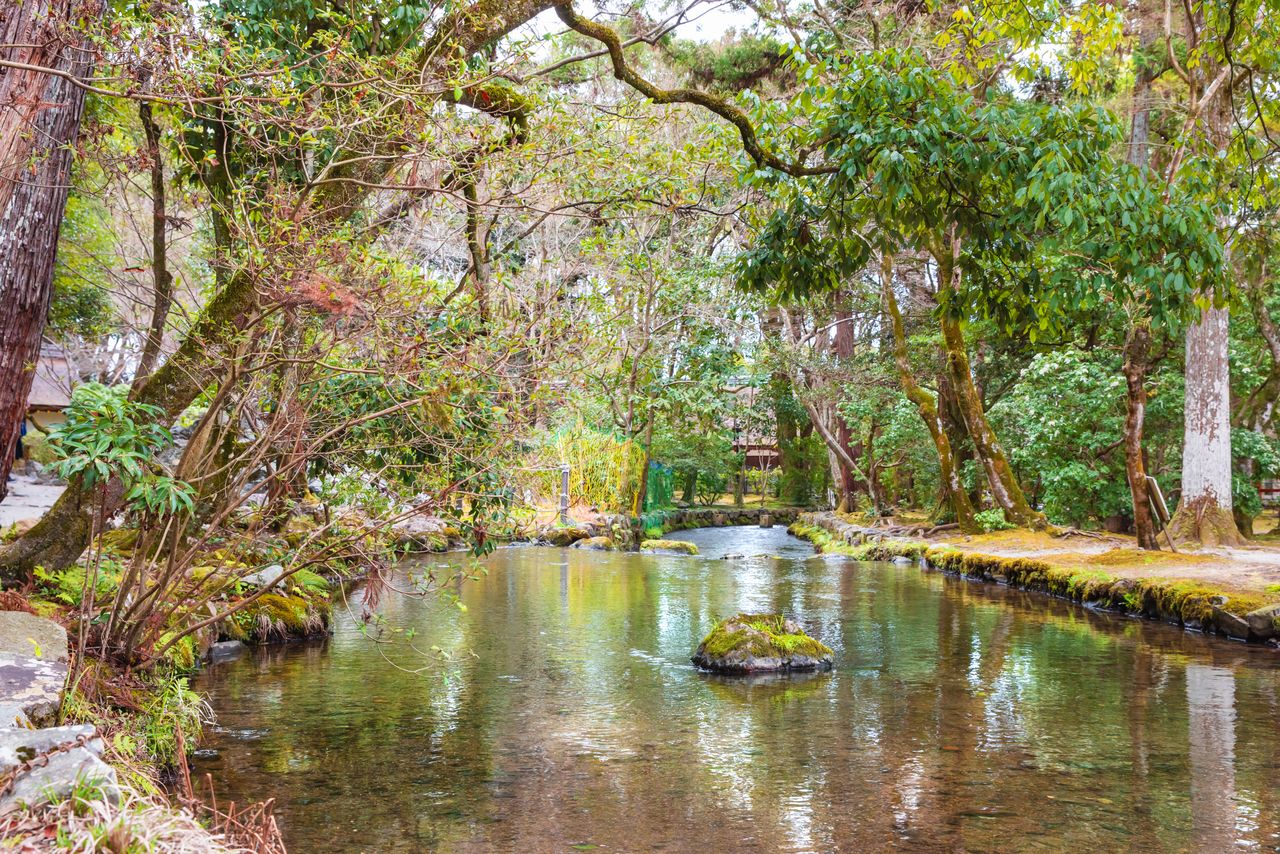
The Omonoi and Mitarashi Rivers meet to form a brook, the Nara no Ogawa, site of the nagoshi no ōharae purification ritual. (© Edit Plus)
Mystical Traditions Inform Power Spots
Being one of Kyoto’s oldest Shintō shrines, Kamigamo boasts numerous “power spots,” the best-known being the tatezuna, a pair of sand mounds in front of the Hosodono hall.
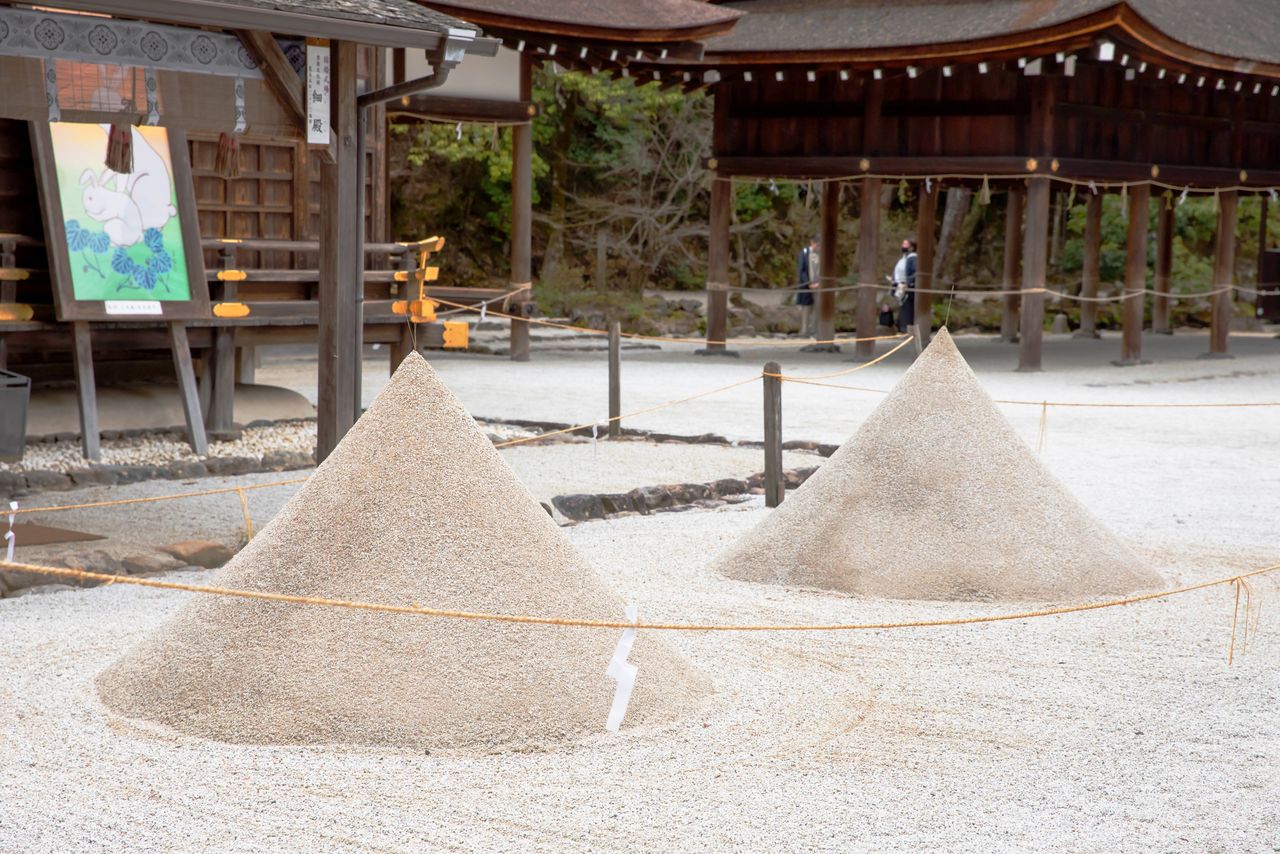
The famous tatezuna sand mounds are hand-shaped by shrine priests. (© Edit Plus)
These conical mounds represent sacred Mount Kōyama. Remains of sites dating to the Jōmon period (ca. 10,000–300 BC) have been found around the mountain, an indication that the area projected a special aura long before the shrine’s founding. Seeking to harness the mountain’s mystical power, in the past worshippers would take sand from the shrine to spread around their homes. This is said to be the origin of the kiyome no suna, a purification rite using sand to ward off misfortune that is practiced even today.
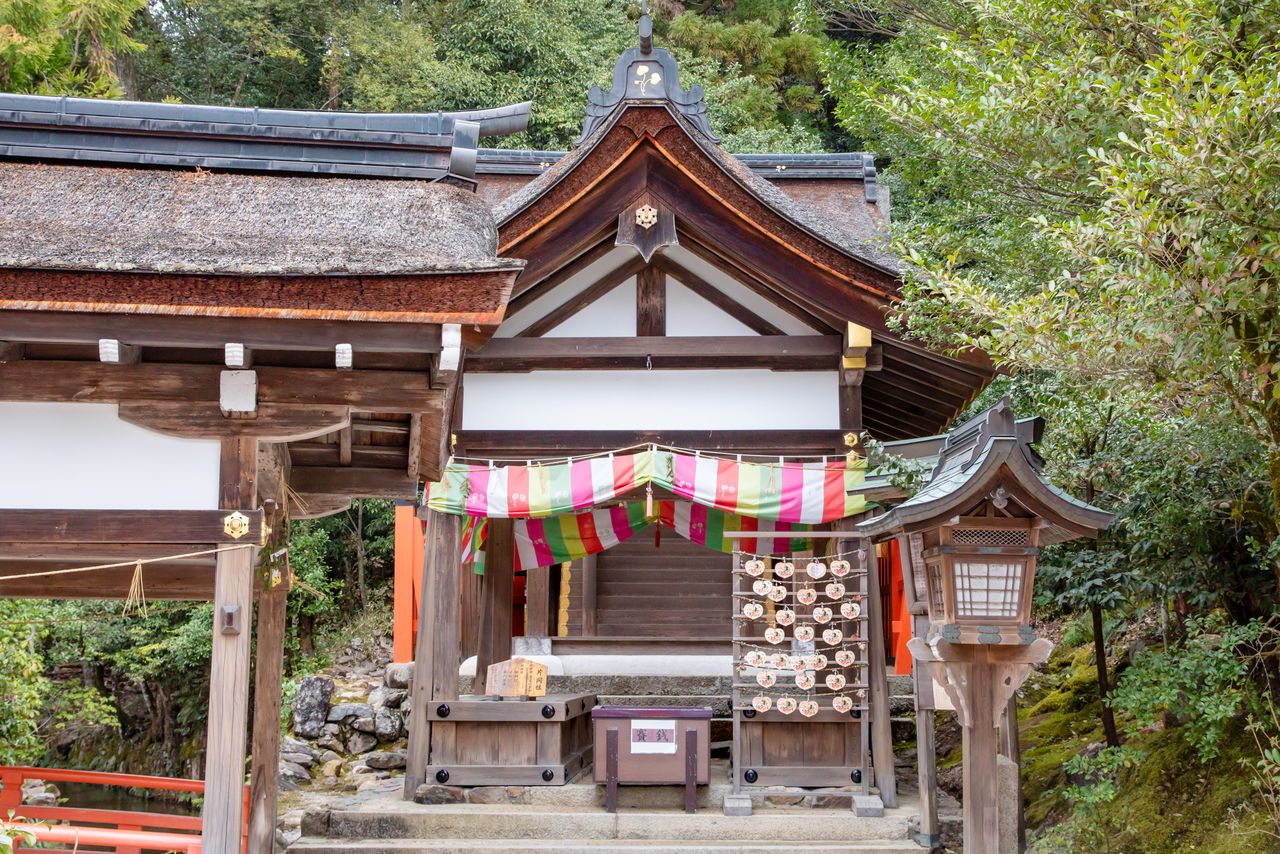
The small Katayama Miko Shrine across from the Rōmon on the far side of the Omonoi River. (© Edit Plus)
The Katayama Miko Shrine, one of Kamigamo’s numerous subsidiary shrines, venerates Kamo Tamayorihime no Mikoto, the mother of the main deity of Kamigamo Shrine, and draws people who pray for safety in childbirth and marital bliss.
The shrine has been known for its association with romantic unions as far back as the Heian period (794–1185). Murasaki Shikibu, author of The Tale of Genji, is purported to have visited the shrine, and ema votive tablets sold there carry a waka by Murasaki recalling a visit with a suitor to the surrounding forest.
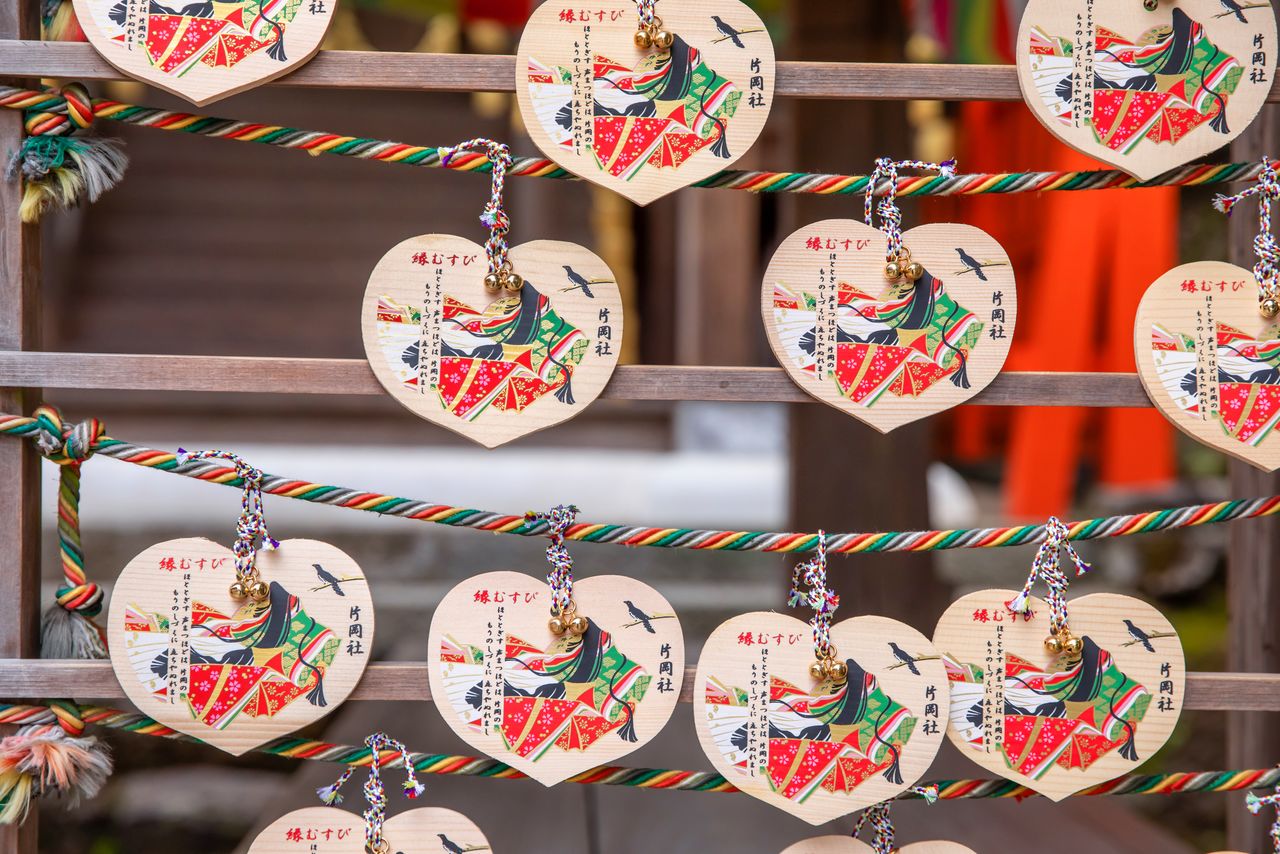
Ema depicting Murasaki Shikibu. The heart-shaped votive tablets are modeled on the shrine’s futaba aoi crest. (© Edit Plus)
The Aoi Matsuri: Heian Period Pageantry
Among the many Kyoto events with a pronounced Heian period flavor, the best known is the Aoi Festival, which takes place every year on May 15. Formally known as the Kamo Matsuri, it is the annual festival of the Kamigamo and Shimogamo Shrines.
The festival’s origins extend back some 1,500 years when Emperor Kinmei (r. 539–71) sent an imperial messenger to the Kamosha to entreat the deity to subdue the famines and epidemics raging through the land at the time. Beginning in the Heian period, imperial princesses called saiō served as the honorary priestess of the shrine.
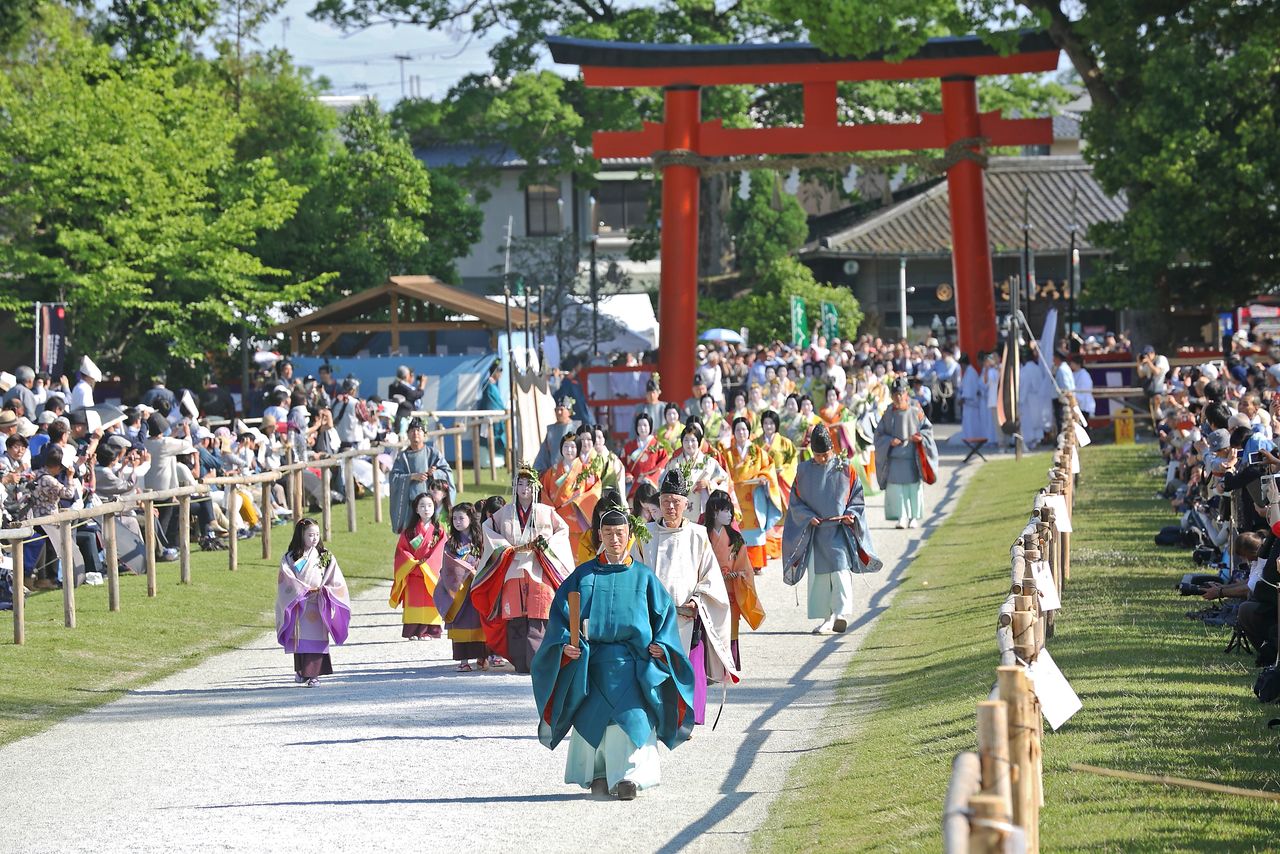
The festival procession with the saiō-dai at its head makes its way to the shrine. (Courtesy Kamigamo Shrine)
During the festival, the saiō-dai and imperial messenger lead a retinue of 500 attendants dressed in period costumes from the Kyoto Imperial Palace to the Kamosha, attracting throngs of visitors eager to witness the splendid spectacle.
Other equally elegant Heian period-inspired events abound, such as the Kamo kyokusui no en, where the previous year’s saiō-dai assigns a topic for a poetry-writing gathering. There is also the Kamo kurabe uma, a horse race between two riders dressed in court costumes.
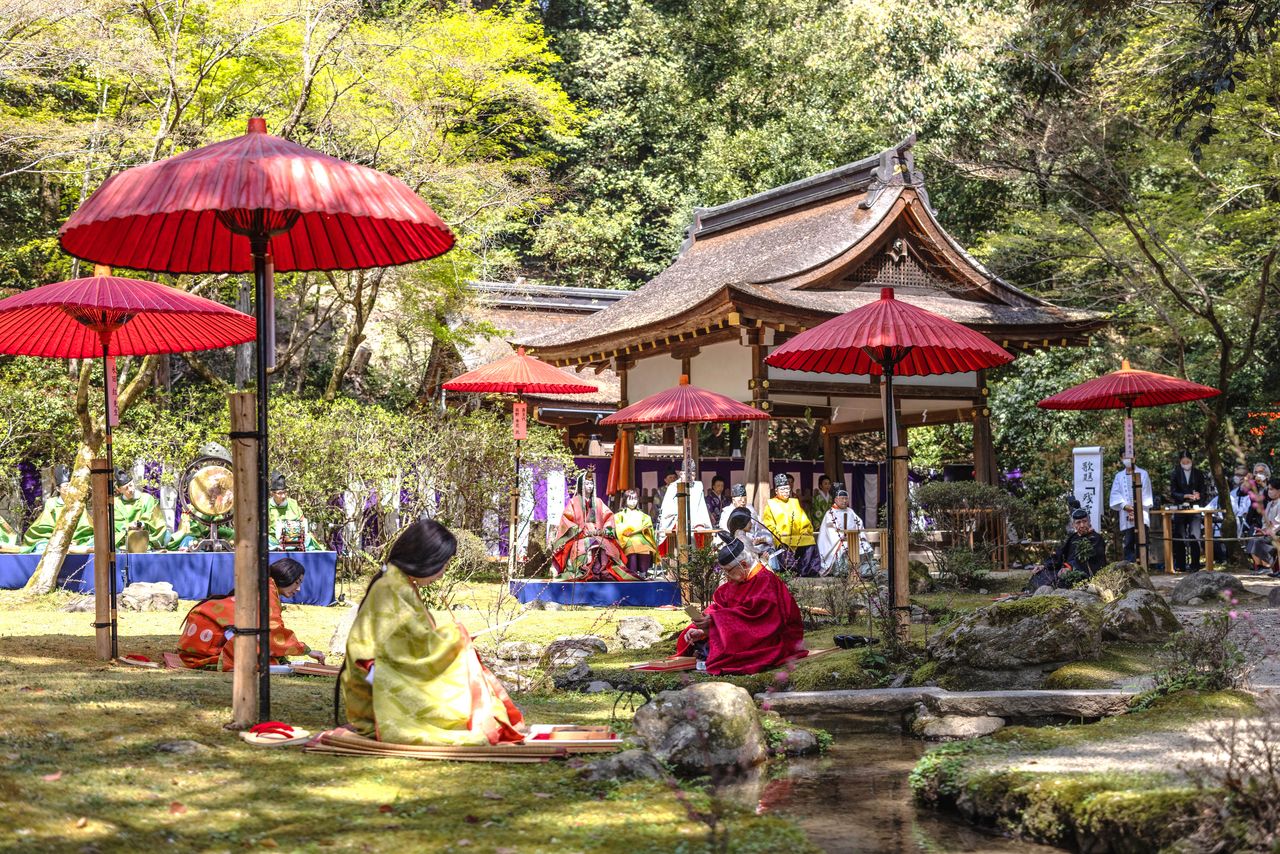
Participants of the Kamo kyokusui no en must improvise a waka verse to read before a sake cup floated on a stream passes in front of them. (Courtesy Kamigamo Shrine)
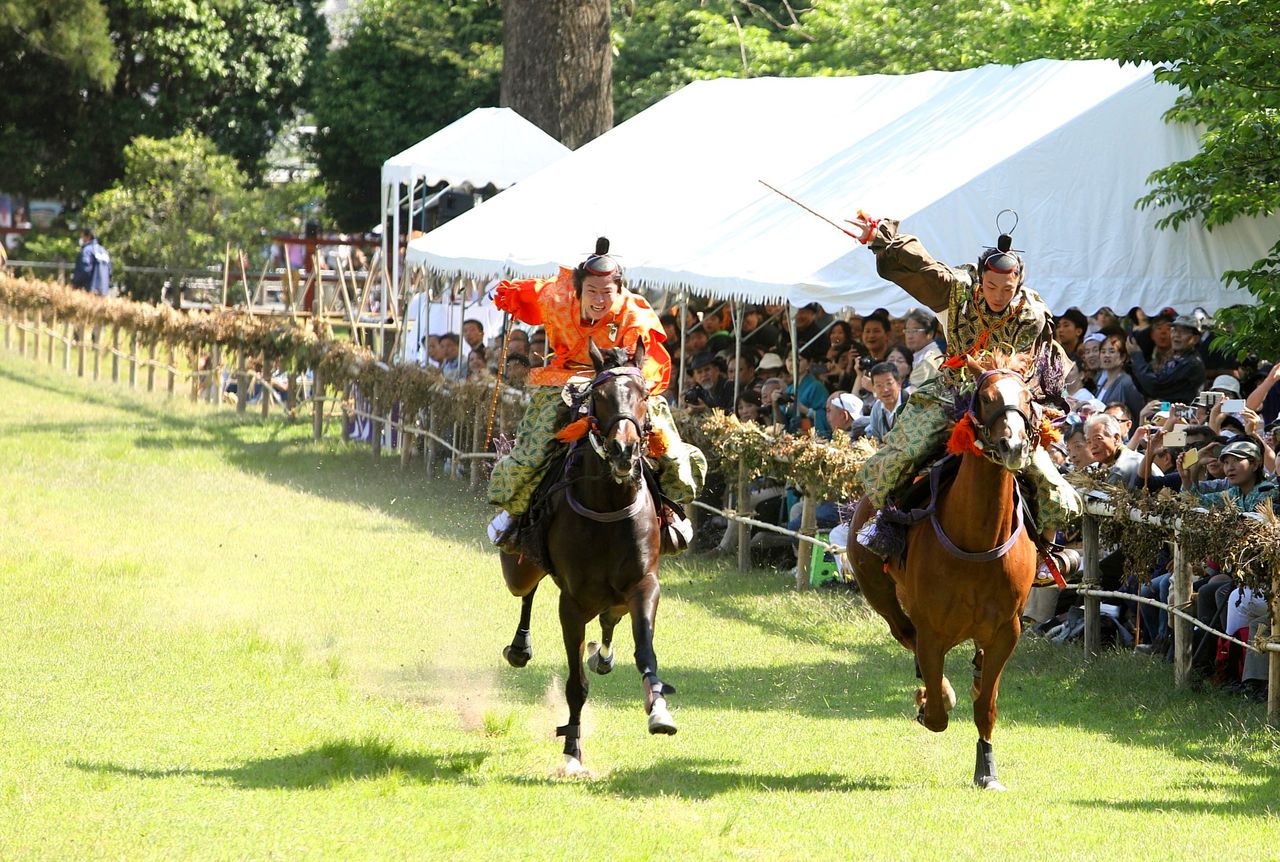
The kurabe uma is a sacred ritual staged to pray for bountiful harvests and peace in the land. (Courtesy Kamigamo Shrine)
In contrast to spring’s Aoi Festival, the nagoshi no ōharae, a ceremony to pray for good health, takes place in early summer on June 30. In the rite, the sins and impurities of the first half of the year are transferred to doll-like paper figures that are released into the Nara no Ogawa. The sight of the figures floating away in the light of bonfires creates a mystical atmosphere. The ceremony is mentioned in Heian period waka, evidence of its enduring place in the hearts of Kyoto residents.
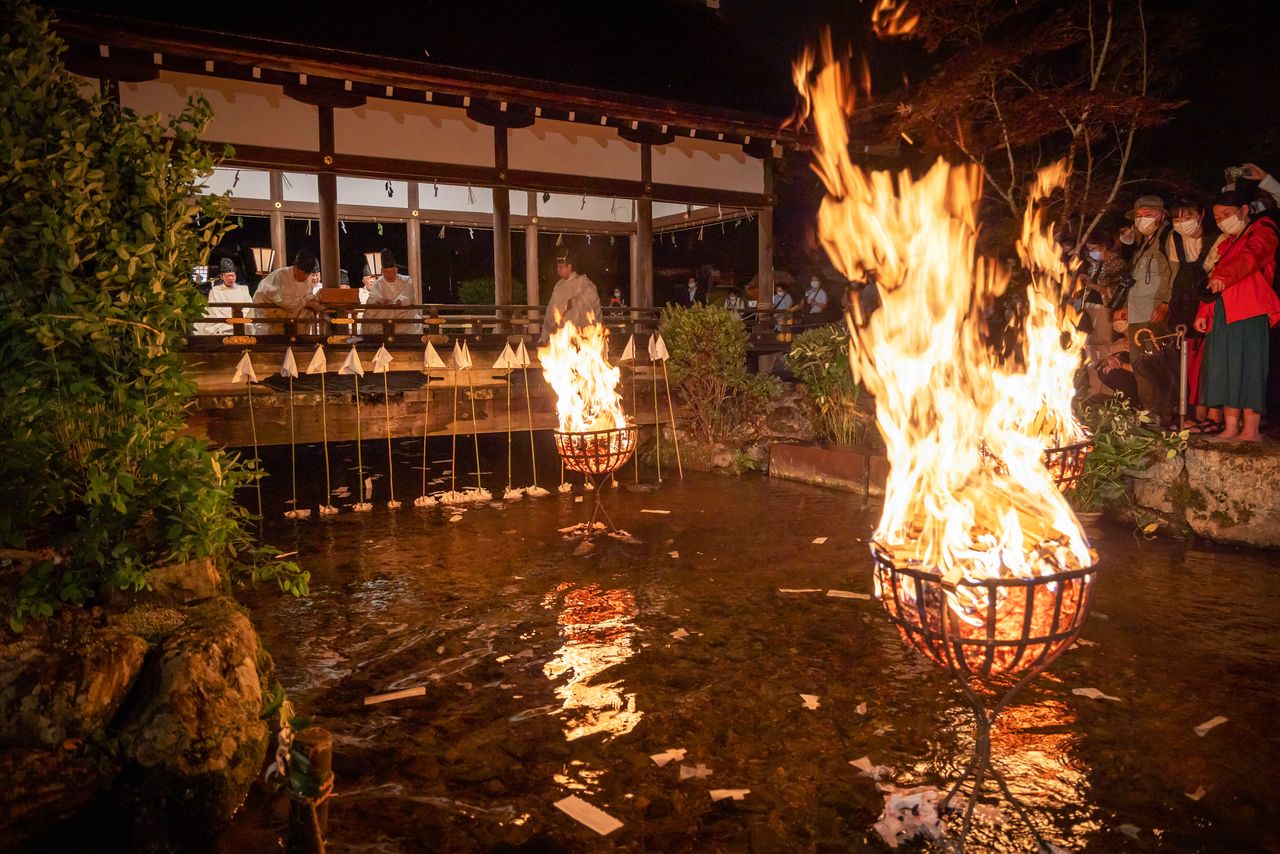
Paper figures presented by worshippers are released into the stream by shrine priests chanting invocations. (Courtesy Kamigamo Shrine)
The “Sen” Kōyama Yūsui Café next to the shrine office is the perfect place to take a break after touring the confines. The coffee, made with Mount Kōyama’s spring water, uses beans specially blended and roasted to bring out the water’s qualities.

The coffee stand, which is open from 10:00 am to 4:00 pm, blends in tastefully with its surroundings. (© Edit Plus)
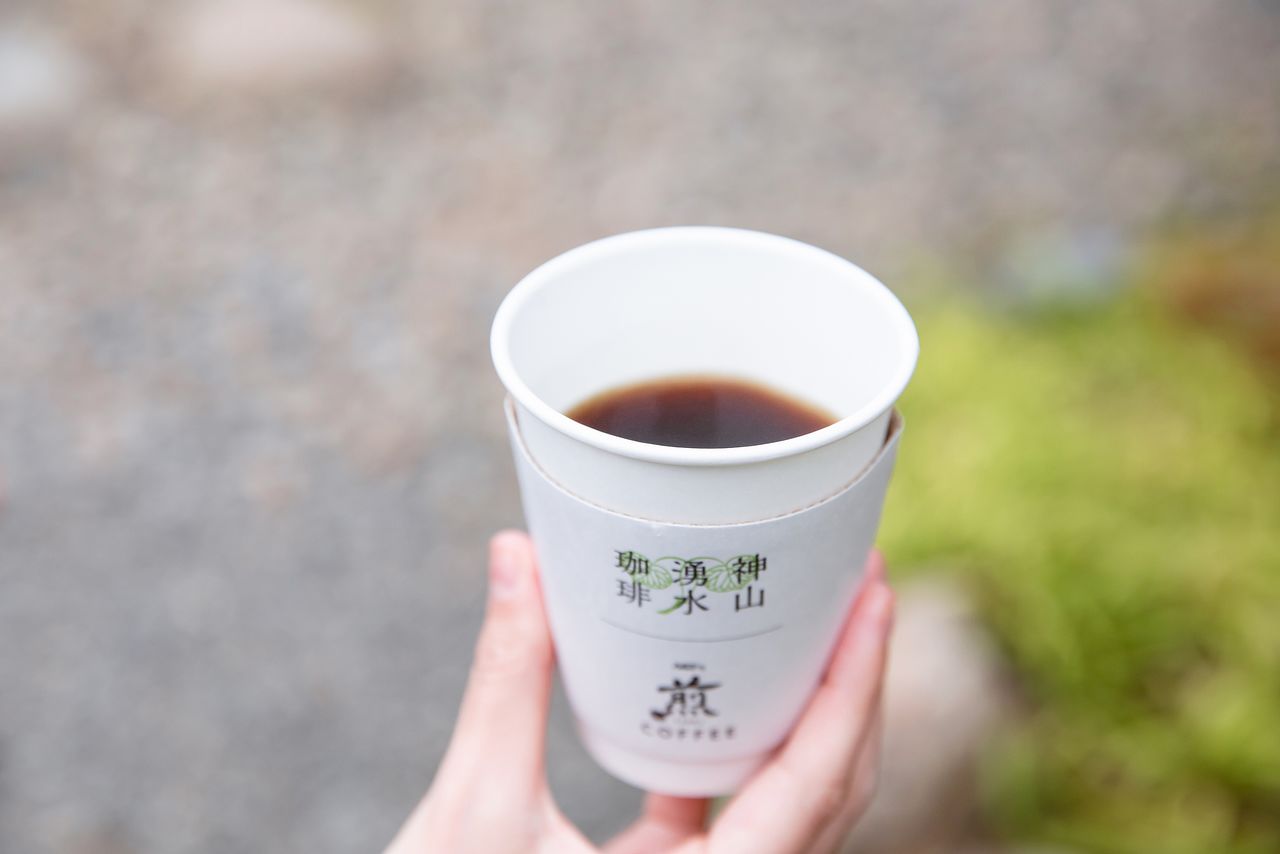
Brewed from Kōyama yūsui spring water, the coffee has a soft, mellow flavor. (© Edit Plus)
Kamigamo Shrine
- Address: 339 Kamigamo, Motoyama, Kita Ward, Kyoto
- Hours: Honden (main sanctuary), 5:30 am to 5:00 pm; special worship at the honden and gonden (temporary sanctuary) 10:00 am to 4:00 pm
- No charge for entering the shrine precincts; special worship fee ¥500 (by prior reservation)
- Open year-round
- Getting there: From JR Kyoto Station, take a Kyoto City Bus bound for Kamigamo Jinja and get off at Kamigamo Jinja-mae, adjacent to the shrine
(Originally published in Japanese. Reporting, text, and photos by Edit Plus.)